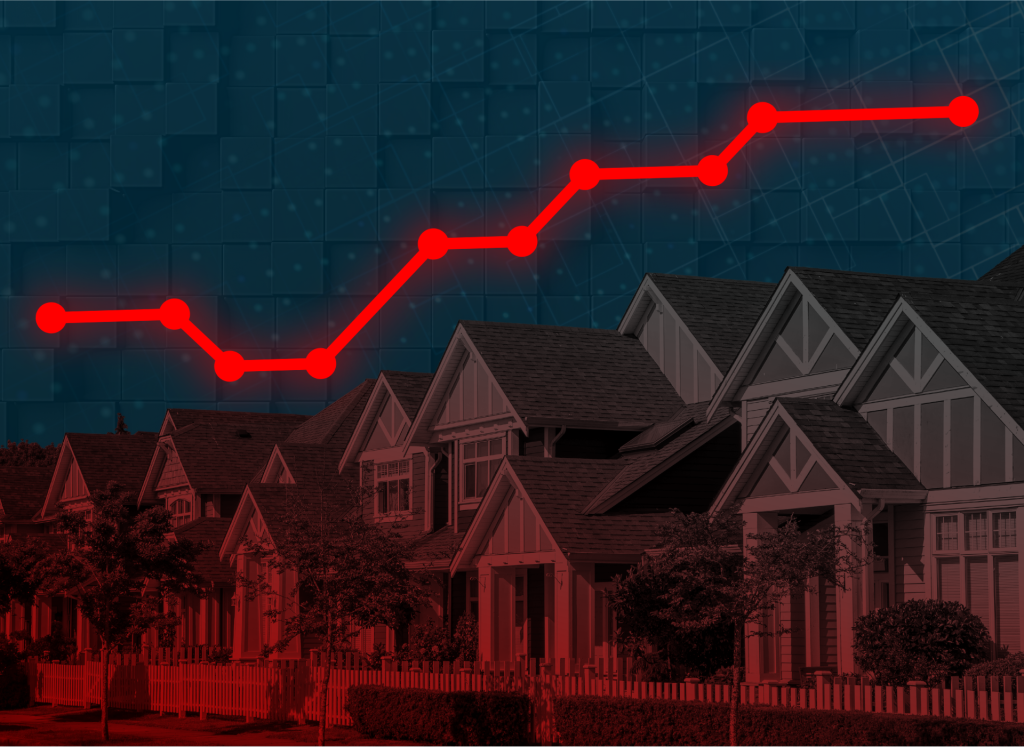Home Prices Are On The Rise (again)

Buyers just can’t get a break from rising home prices. The median home price across the country at the close of summer 2023 was $406,700. The big softening in the market that so many first-time buyers have been counting on for the past three years is nowhere in sight. What’s more, high interest rates are squeezing buyers in what is already a very unforgiving market. How much are buyers really paying in the 2023 real estate market? Let’s dive into how prices are shaping up for the last quarter of the year.
Market Shocker: How Prices Increased in August
According to the Freddie Mac House Price Index (FMHPI®), home prices around the country have been steadily rising since January of 2023 after experiencing a relative lull that lasted from July 2022 to December 2023. Of course, prices never even came close to normalizing to pre-pandemic levels during this period. How did August of this year look?
“The median price of homes for sale increased by 0.7% annually after declining on an annual basis for two months in a row,” according to Realtor.com’s August 2023 Monthly Housing Market Trends Report. This won’t come as a surprise to any buyer who has witnessed intense bidding wars in various markets around the country this summer. There are several factors in play when it comes to why sky-high home prices continue to be “normal.” The simple answer for why home prices remain high is that inventory remains historically low. However, this answer actually contains several complex layers that are impacting seller and buyer behaviors.
The Problem of Low Inventory
The inventory of available homes for August of 2023 had 7.5% fewer newly listed homes compared to this time last year. Homes simply aren’t making their way to the market at a pace that can keep up with buyer demand. In fact, home inventories around the country are still at just a fraction of where they were before the pandemic. However, the reasons behind why owners are staying in their homes instead of listing have evolved since then.
The real estate market was hit with an inventory shortage at the very beginning of the COVID-19 pandemic that has not eased up! In 2020, many people who would normally list their homes in the spring and summer decided to simply stay put due to the fear and uncertainty the world was facing. Meanwhile, many buyers reacted in the opposite way. There was a rush to leave cities in favor of quieter areas. Additionally, many people who were given the ability to work from home for the first time took advantage of the opportunity to move away from the notoriously expensive commuter-friendly areas they had been stuck with in the past.
A reluctance to give up existing homes among sellers that was combined with a new sense of wanderlust among buyers meant that the country simply didn’t have enough homes on the market to satisfy buyer demand. This resulted in the high prices and bidding wars that we’re all very aware of today. Under normal circumstances, the inventory shortage would have eased up once worries over COVID began fading into the background. However, inflation reared its head around the same time when most of the homeowners who had been holding on to their properties would have listed their homes.
A recent Zillow report found that rate-locked homeowners are nearly twice as likely to not consider selling. Among mortgage holders polled in June of 2023, those with rates higher than 5% were twice as likely to have plans to sell within the next three years compared to those with rates below 5%. This is a major factor for the market going forward when you consider that many people who purchased homes before 2021 have sub-3% rates.
With interest rates topping 7% this August, fewer homeowners felt motivated to trade in their low-interest mortgages for high-interest mortgages. A swap like this could cost the average homeowner hundreds to thousands of extra dollars per month on their mortgage. While some sellers were still motivated enough by the prospect of cashing in on home equity to sell, enough were deterred by sky-high interest rates to keep inventory at historic lows throughout the summer.
Will Home Prices Remain High?
It’s impossible to say what home prices will do over the next three to nine months. However, chances of home prices abruptly dipping are low. The fact that August saw an unusual uptick in newly listed homes compared to the previous month could be a sign that seller activity is going to increase as we head into fall. This could certainly cause prices to ease a bit. It would also be good news for buyers who are hoping to get into a new home before the holiday season. If the Federal Reserve finally reduces interest rates in 2024, more sellers might be confident about finally listing their homes. This shift could finally help buyers to escape what has felt like a perpetual seller’s market for the past three years.

